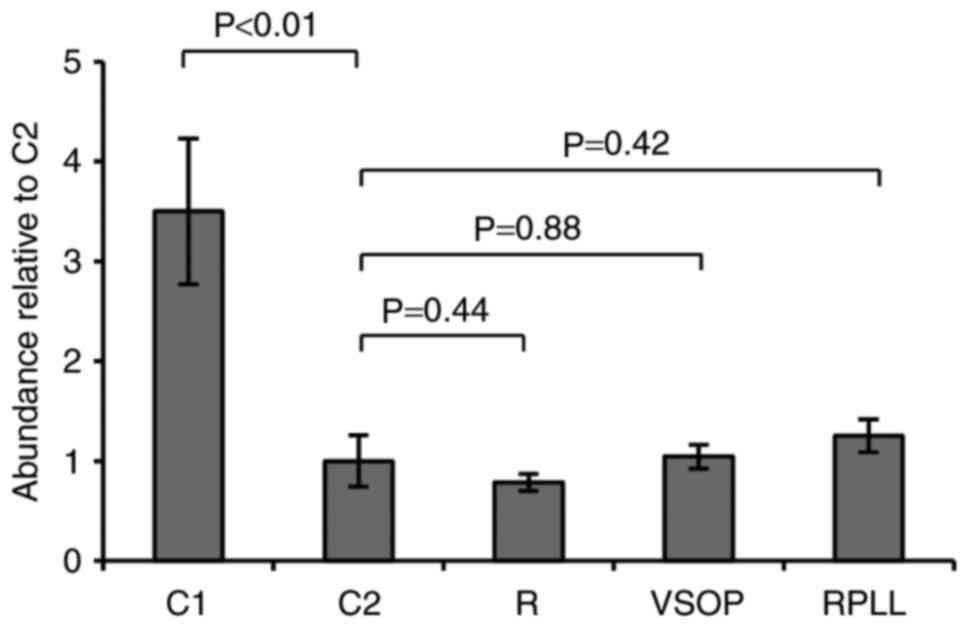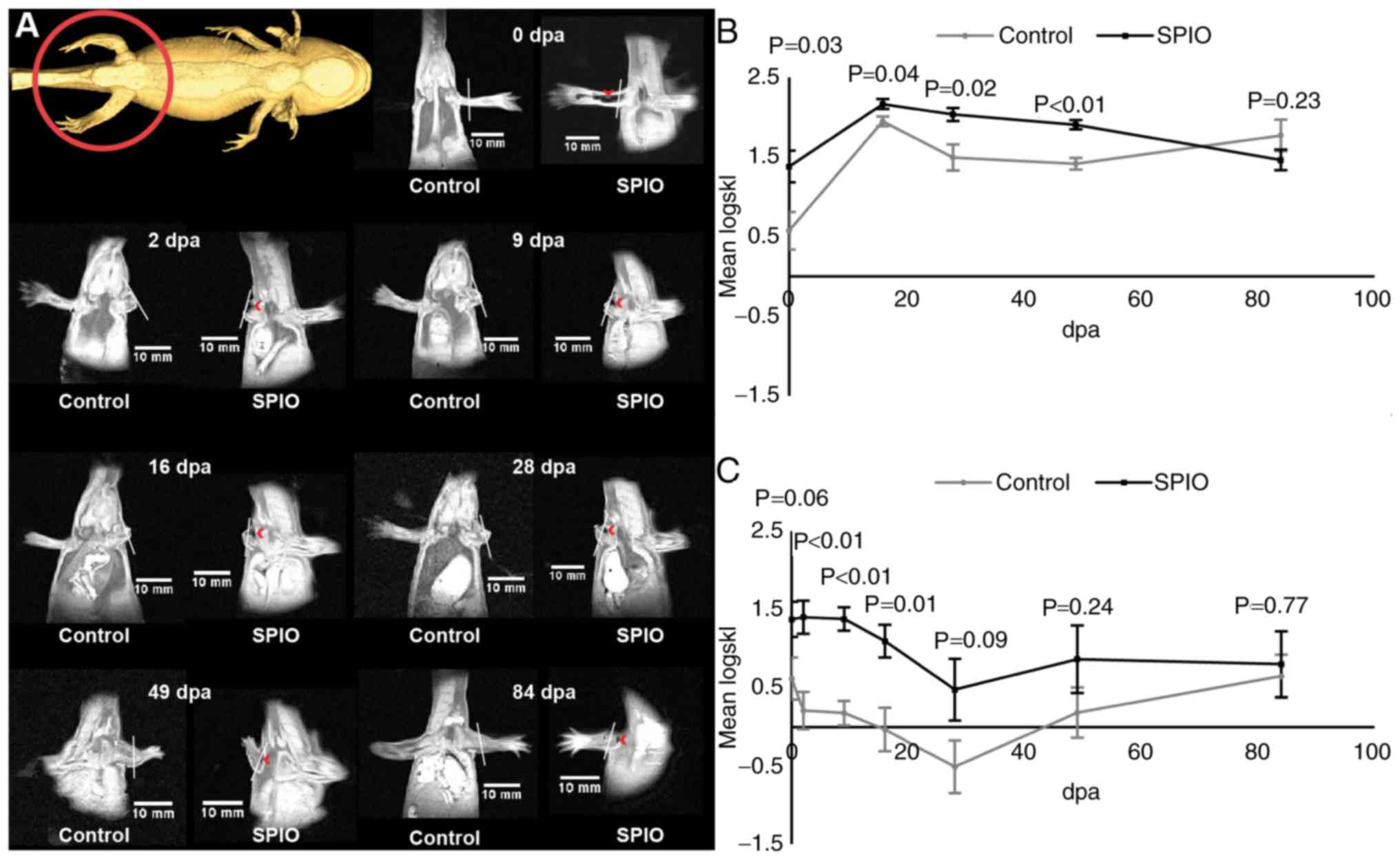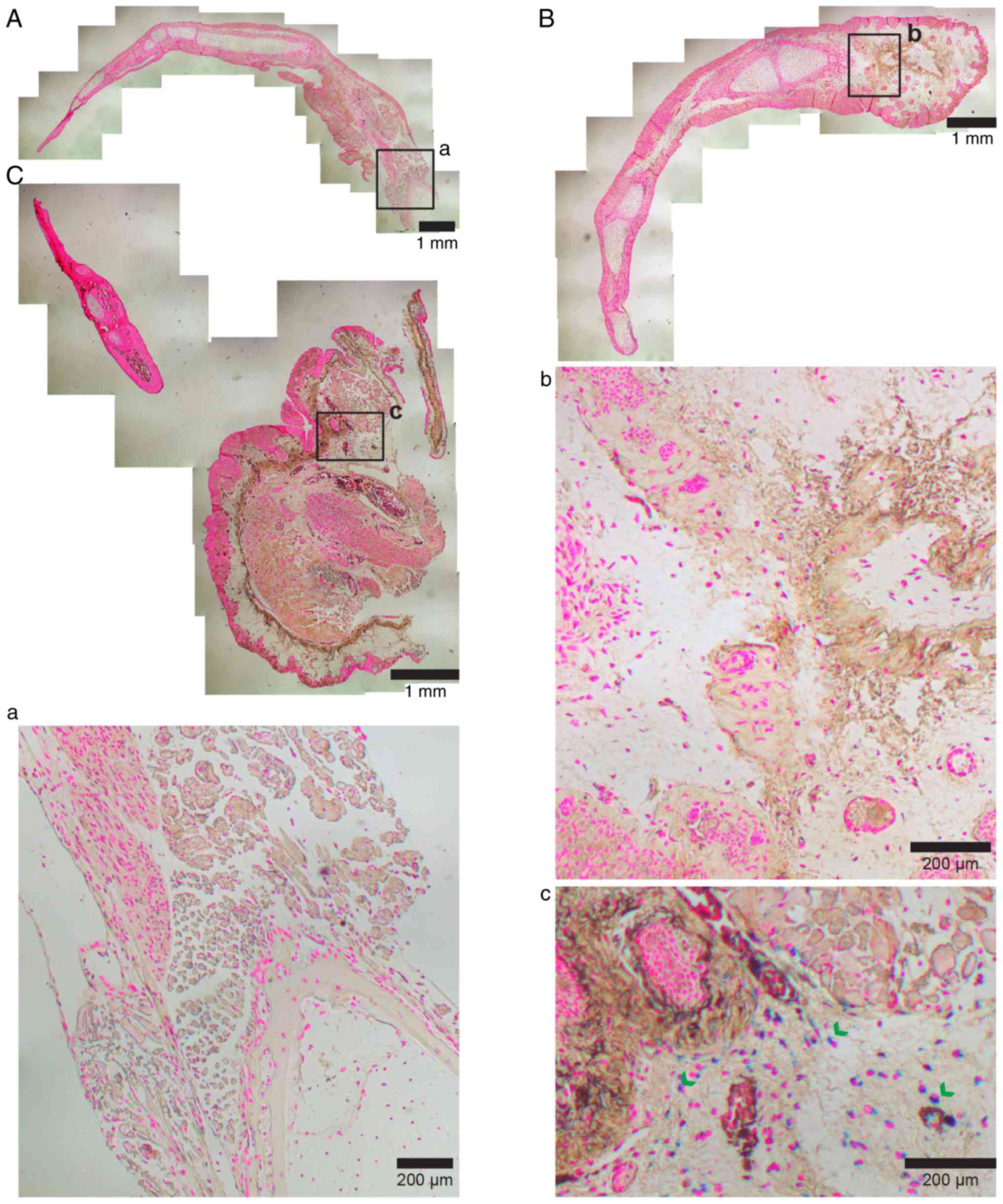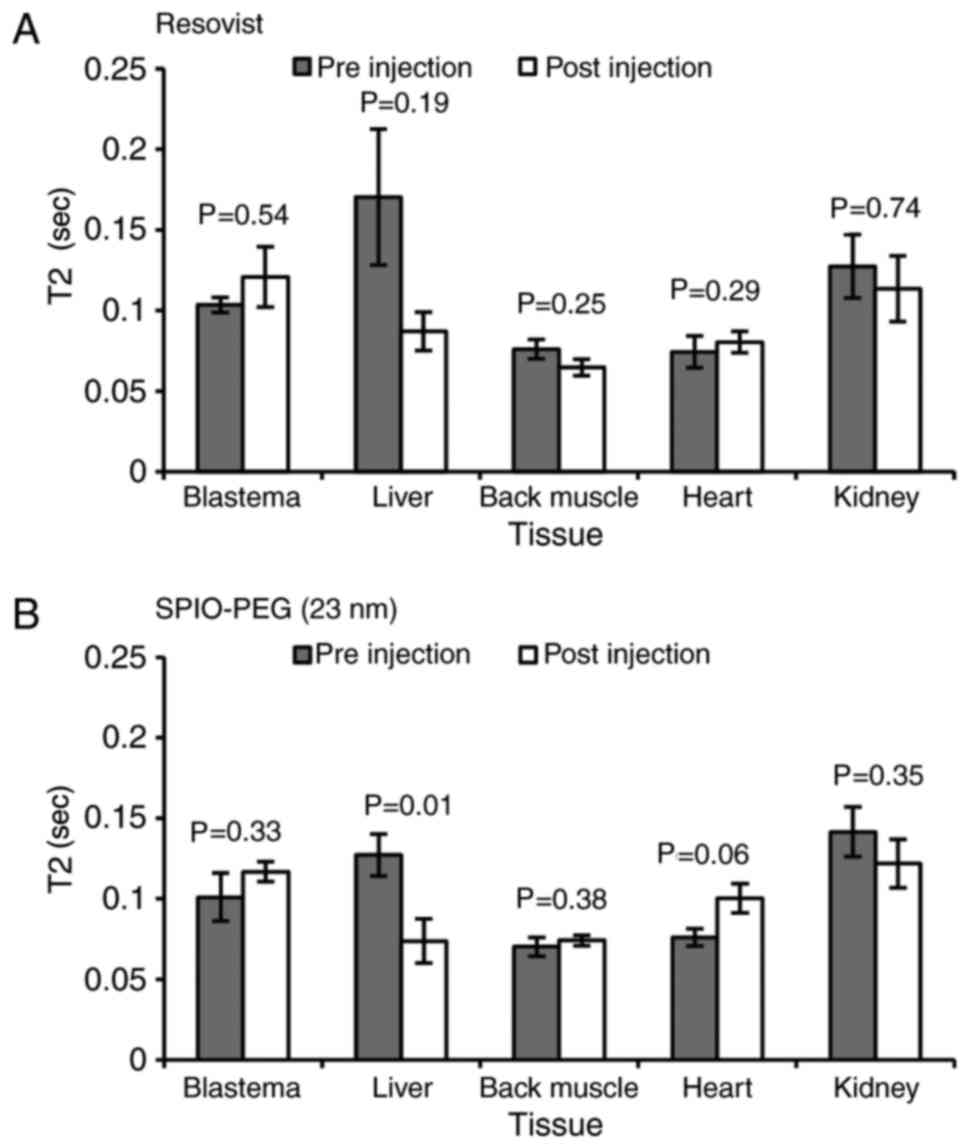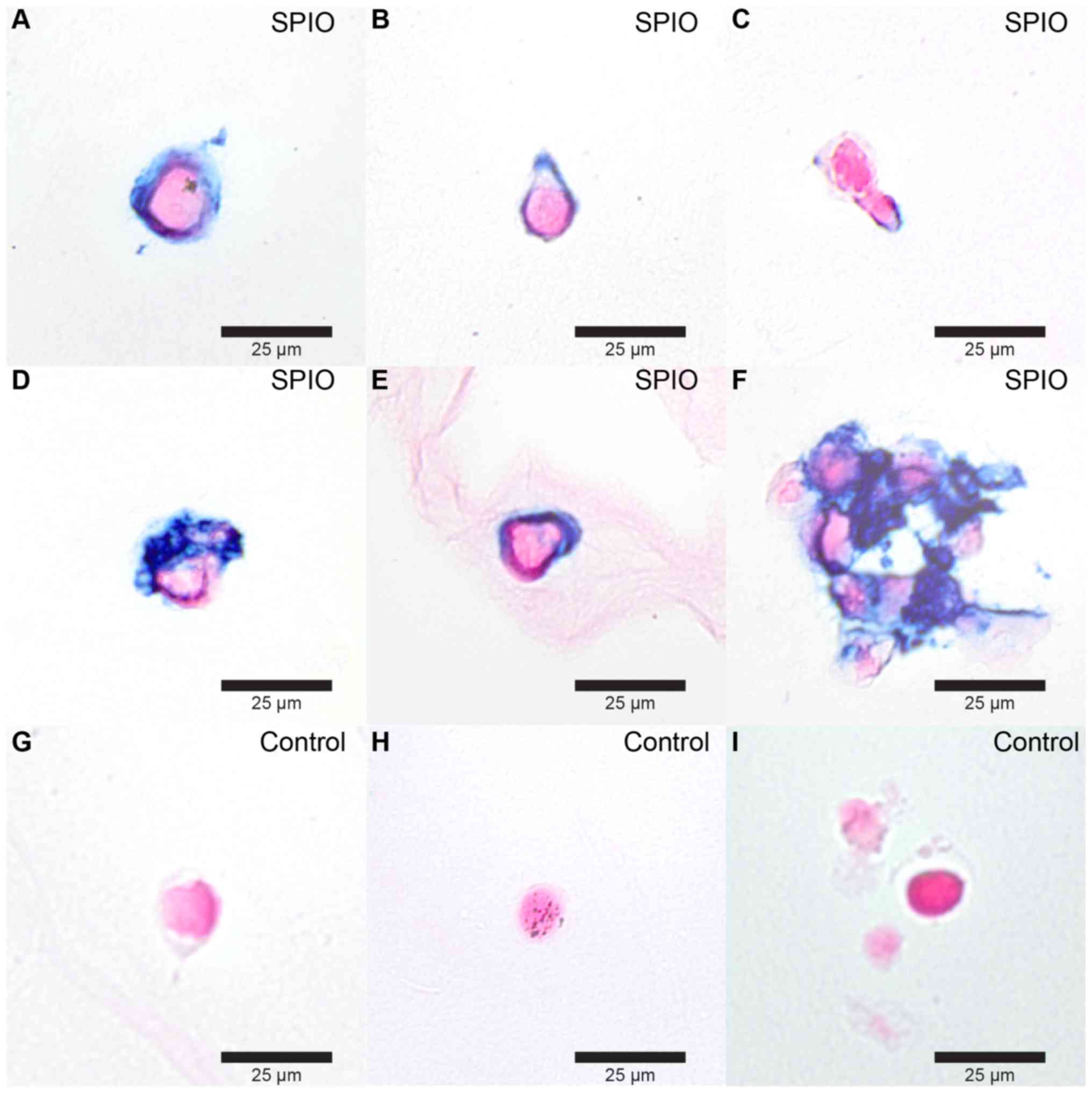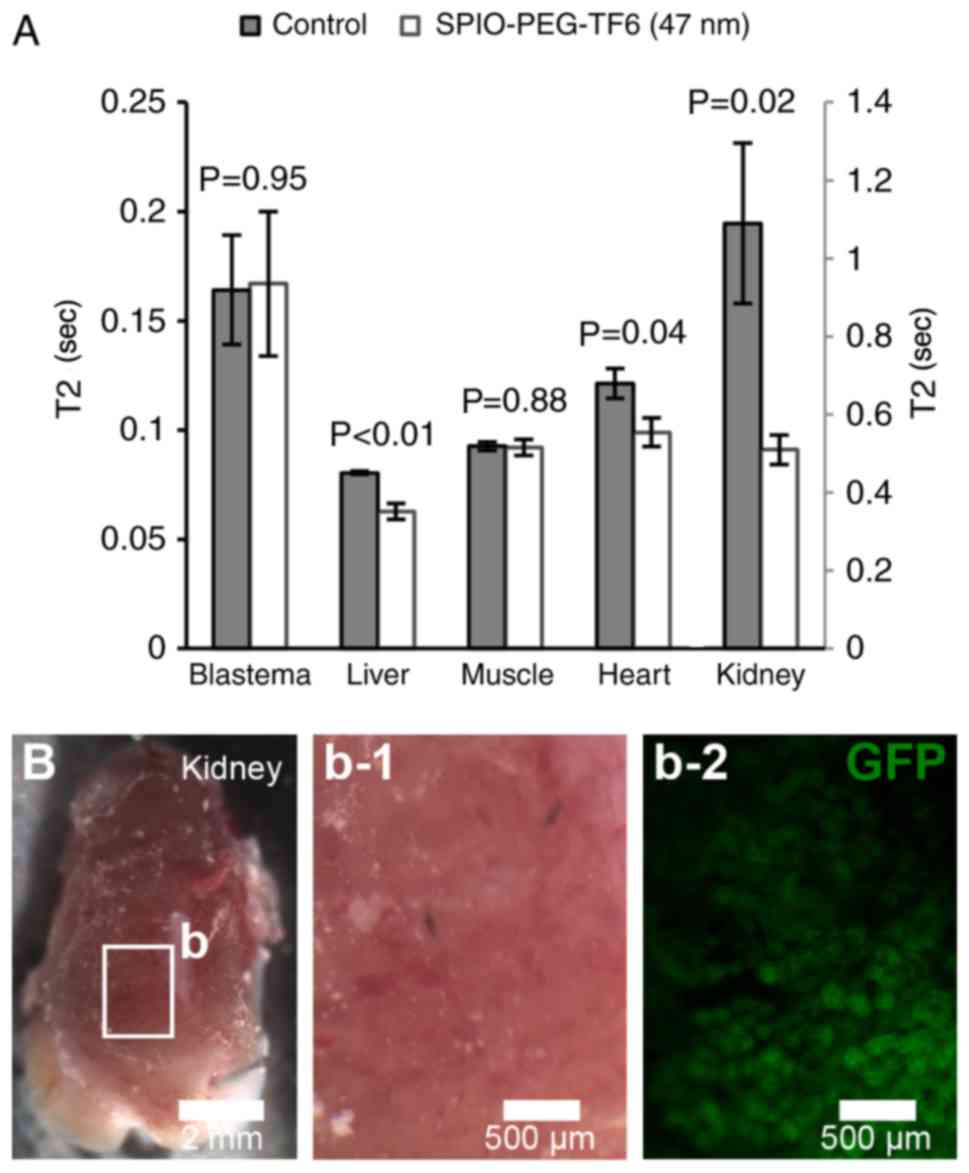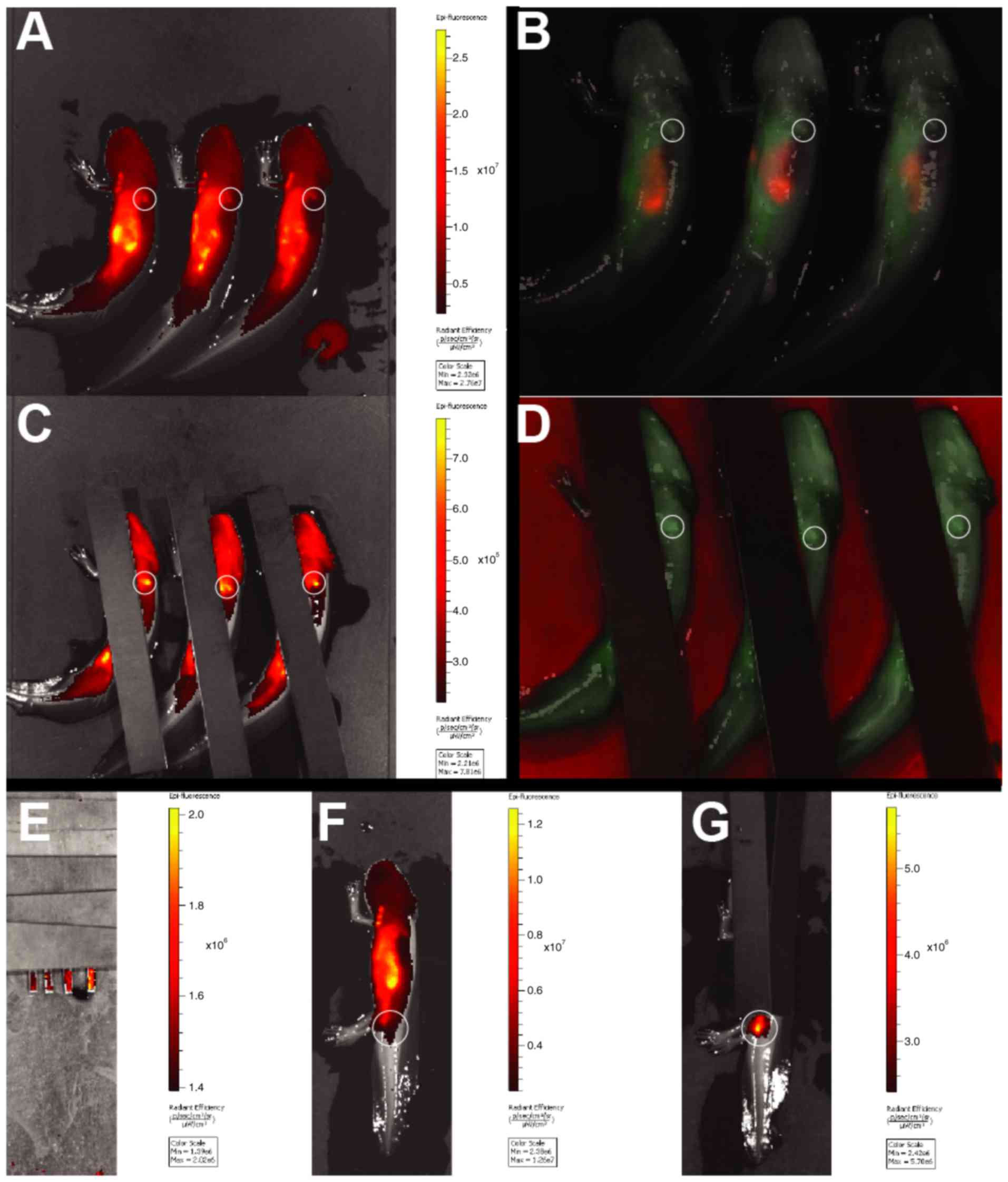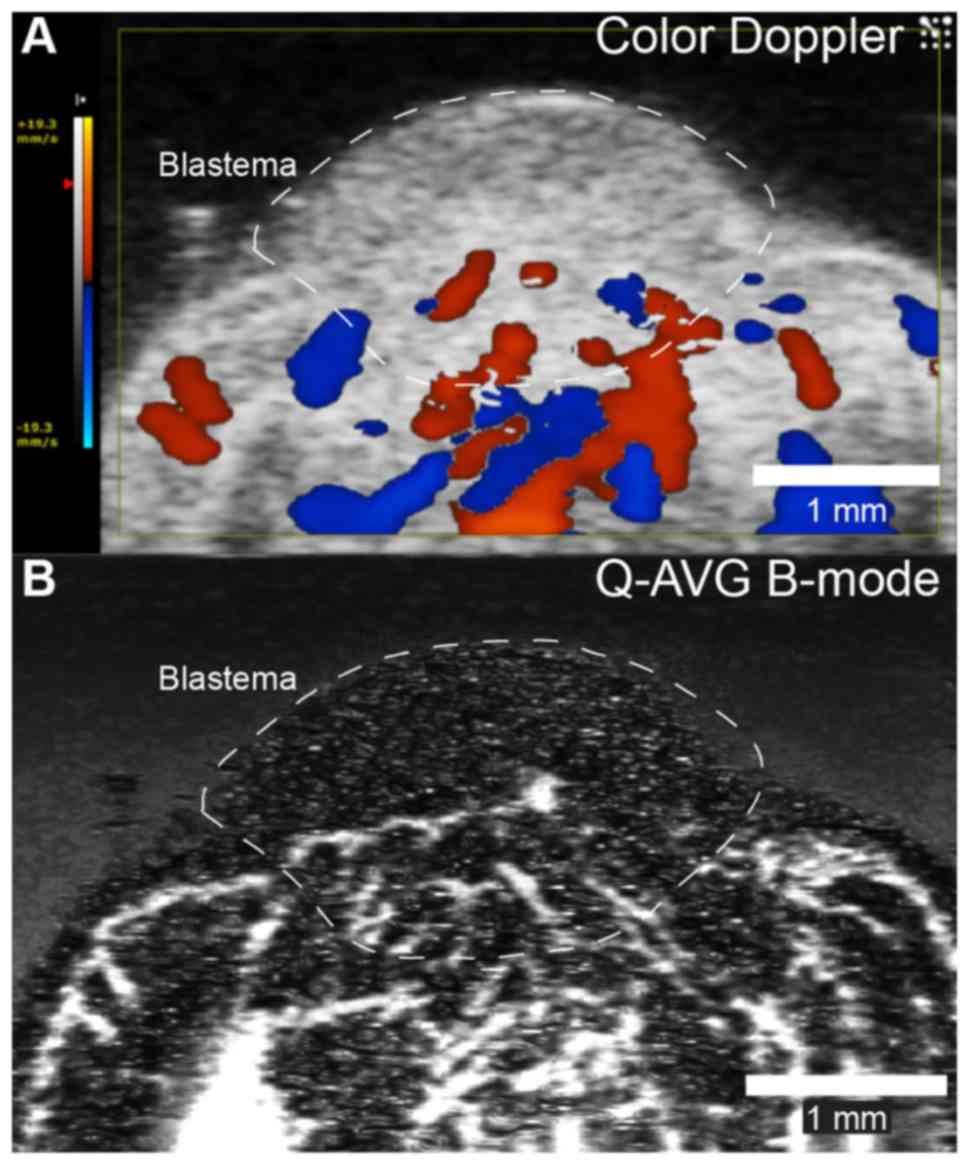|
1
|
Birnbaum KD and Sánchez-Alvarado A:
Slicing across kingdoms: Regeneration in plants and animals. Cell.
132:697–710. 2008. View Article : Google Scholar : PubMed/NCBI
|
|
2
|
Edwards RG: From embryonic stem cells to
blastema and MRL mice. Reprod Biomed Online. 16:425–461. 2008.
View Article : Google Scholar : PubMed/NCBI
|
|
3
|
Stocum DL: Regenerative biology and
medicine. J Musculoskelet Neuronal Interact. 2:270–273.
2002.PubMed/NCBI
|
|
4
|
Stocum DL and Zupanc GK: Stretching the
limits: Stem cells in regeneration science. Dev Dyn. 237:3648–3671.
2008. View Article : Google Scholar : PubMed/NCBI
|
|
5
|
Douglas BS: Conservative management of
guillotine amputation of the finger in children. Aust Paediatr J.
8:86–89. 1972.PubMed/NCBI
|
|
6
|
Goss RJ, Van Praagh A and Brewer P: The
mechanism of antler casting in the fallow deer. J Exp Zool.
264:429–436. 1992. View Article : Google Scholar : PubMed/NCBI
|
|
7
|
Goss RJ: Future directions in antler
research. Anat Rec. 241:291–302. 1995. View Article : Google Scholar : PubMed/NCBI
|
|
8
|
Han M, Yang X, Lee J, Allan CH and Muneoka
K: Development and regeneration of the neonatal digit tip in mice.
Dev Biol. 315:125–135. 2008. View Article : Google Scholar : PubMed/NCBI
|
|
9
|
Huh JY, Choi BH, Kim BY, Lee SH, Zhu SJ
and Jung JH: Critical size defect in the canine mandible. Oral Surg
Oral Med Oral Pathol Oral Radiol Endod. 100:296–301. 2005.
View Article : Google Scholar : PubMed/NCBI
|
|
10
|
Rosenthal LJ, Reiner MA and Bleicher MA:
Nonoperative management of distal fingertip amputations in
children. Pediatrics. 64:1–3. 1979.PubMed/NCBI
|
|
11
|
Krogh A: The progress of physiology.
Science. 70:200–204. 1929. View Article : Google Scholar : PubMed/NCBI
|
|
12
|
Bryant SV, Endo T and Gardiner DM:
Vertebrate limb regeneration and the origin of limb stem cells. Int
J Dev Biol. 46:887–896. 2002.PubMed/NCBI
|
|
13
|
Kragl M, Knapp D, Nacu E, Khattak S, Maden
M, Epperlein HH and Tanaka EM: Cells keep a memory of their tissue
origin during axolotl limb regeneration. Nature. 460:60–65. 2009.
View Article : Google Scholar : PubMed/NCBI
|
|
14
|
Menger B, Vogt PM, Kuhbier JW and Reimers
K: Applying amphibian limb regeneration to human wound healing: A
review. Ann Plast Surg. 65:504–510. 2010. View Article : Google Scholar : PubMed/NCBI
|
|
15
|
Morrison JL, Lööf S, He P and Simon A:
Salamander limb regeneration involves the activation of a
multipotent skeletal muscle satellite cell population. J Cell Biol.
172:433–440. 2006. View Article : Google Scholar : PubMed/NCBI
|
|
16
|
Roy S and Gatien S: Regeneration in
axolotls: A model to aim for! Exp Gerontol. 43:1–973. 2008.
View Article : Google Scholar : PubMed/NCBI
|
|
17
|
Stoick-Cooper CL, Moon RT and Weidinger G:
Advances in signaling in vertebrate regeneration as a prelude to
regenerative medicine. Genes Dev. 21:1292–1315. 2007. View Article : Google Scholar : PubMed/NCBI
|
|
18
|
Armstrong JB and Malacinski GM:
Developmental Biology of the Axolotl. Barnes Noble. 65:3361989.
|
|
19
|
Gresens J: An introduction to the Mexican
axolotl (Ambystoma mexicanum). Lab Anim (NY). 33:41–47. 2004.
View Article : Google Scholar : PubMed/NCBI
|
|
20
|
Endo T, Bryant SV and Gardiner DM: A
stepwise model system for limb regeneration. Dev Biol. 270:135–145.
2004. View Article : Google Scholar : PubMed/NCBI
|
|
21
|
Kumar A, Nevill G, Brockes JP and Forge A:
A comparative study of gland cells implicated in the nerve
dependence of salamander limb regeneration. J Anat. 217:16–25.
2010. View Article : Google Scholar : PubMed/NCBI
|
|
22
|
Satoh A, James MA and Gardiner DM: The
role of nerve signaling in limb genesis and agenesis during axolotl
limb regeneration. J Bone Joint Surg Am. 91 Suppl 4:S90–S98. 2009.
View Article : Google Scholar
|
|
23
|
Tank PW, Carlson BM and Conelly TG: A
staging system for forelimb regeneration in the axolotl, Ambystoma
mexicanum. J Morphol. 150:117–128. 1976. View Article : Google Scholar : PubMed/NCBI
|
|
24
|
Arbab AS, Jordan EK, Wilson LB, Yocum GT,
Lewis BK and Frank JA: In vivo trafficking and targeted delivery of
magnetically labelled stem cells. Hum Gene Ther. 15:351–360. 2004.
View Article : Google Scholar : PubMed/NCBI
|
|
25
|
Arbab AS, Yocum GT, Kalish H, Jordan EK,
Anderson SA, Khakoo AY, Read EJ and Frank JA: Efficient magnetic
cell labelling with protamine sulfate complexed to ferumoxides for
cellular MRI. Blood. 104:1217–1223. 2004. View Article : Google Scholar : PubMed/NCBI
|
|
26
|
Saldanha KJ, Piper SL, Ainslie KM, Kim HT
and Majumdar S: Magnetic resonance imaging of iron oxide labelled
stem cells: Applications to tissue engineering based regeneration
of the intervertebral disc. Eur Cell Mater. 16:17–25. 2008.
View Article : Google Scholar : PubMed/NCBI
|
|
27
|
Crevensten G, Walsh AJ, Ananthakrishnan D,
Page P, Wahba GM, Lotz JC and Berven S: Intervertebral disc cell
therapy for regeneration: Mesenchymal stem cell implantation in rat
intervertebral discs. Ann Biomed Eng. 32:430–434. 2004. View Article : Google Scholar : PubMed/NCBI
|
|
28
|
Sakai D, Mochida J, Iwashina T, Hiyama A,
Omi H, Imai M, Nakai T, Ando K and Hotta T: Regenerative effects of
transplanting mesenchymal stem cells embedded in atelocollagen to
the degenerated intervertebral disc. Biomaterials. 27:335–345.
2006. View Article : Google Scholar : PubMed/NCBI
|
|
29
|
Haacke EM, Brown RW, Thompson MR and
Vankatesan R: Magnetic Resonance Imaging. Med diag. 1999.
|
|
30
|
Ittrich H, Peldschus K, Raabe N, Kaul M
and Adam G: Superparamagnetic iron oxide nanoparticles in
biomedicine: Applications and development in diagnostics and
therapy. Rofo. 185:1149–1166. 2013. View Article : Google Scholar : PubMed/NCBI
|
|
31
|
Frank JA, Miller BR, Arbab AS, Zywicke HA,
Jordan EK, Lewis BK, Bryant LH Jr and Bulte JW: Clinically
applicable labelling of mammalian and stem cells by combining
superparamagnetic iron oxides and transfection agents. Radiology.
228:480–487. 2003. View Article : Google Scholar : PubMed/NCBI
|
|
32
|
Kalish H, Arbab AS, Miller BR, Lewis BK,
Zywicke HA, Bulte JW, Bryant LH Jr and Frank JA: Combination of
transfection agents and magnetic resonance contrast agents for
cellular imaging: Relationship between relaxivities, electrostatic
forces, and chemical composition. Magn Reson Med. 50:275–282. 2003.
View Article : Google Scholar : PubMed/NCBI
|
|
33
|
Yang CY, Tai MF, Lin CP, Lu CW, Wang JL,
Hsiao JK and Liu HM: Mechanism of cellular uptake and impact of
ferucarbotran on macrophage physiology. PLoS One. 6:e255242011.
View Article : Google Scholar : PubMed/NCBI
|
|
34
|
Foldager CB, Pedersen M, Ringgaard S,
Bünger C and Lind M: Chondrocyte gene expression is affected by
very small iron oxide particles-labeling in long-term in vitro MRI
tracking. J Magn Reson Imaging. 33:724–730. 2011. View Article : Google Scholar : PubMed/NCBI
|
|
35
|
Kafuels N, Korn R, Wagner S, Schink T,
Hamm B, Taupitz M and Schnorr J: Magnetic resonance imaging of
liver metastases: Experimental comparison of anionic and
conventional superparamagnetic iron oxide particles with a
hepatobiliary contrast medium during dynamic and uptake phases.
Invest Radiol. 43:496–503. 2008. View Article : Google Scholar : PubMed/NCBI
|
|
36
|
Hansen L, Larsen EK, Nielsen EH, Ivesen F,
Liu Z, Thomsen K, Pedersen M, Skrydstrup T, Nielsen NC, Ploug M and
Kjems J: Targeting of peptide conjugated magnetic nanoparticles to
urokinase plasminogen activator receptor (uPAR) expressing cells.
Nanoscale. 5:8192–8201. 2013. View Article : Google Scholar : PubMed/NCBI
|
|
37
|
Kumar A and Godwin JW: Preparation and
culture of limb blastema stem cells from regenerating larval and
adult salamanders. Cold Spring Harb Protoc. 2010:pdb.prot53672010.
View Article : Google Scholar : PubMed/NCBI
|
|
38
|
Cosden RS, Lattermann C, Romine S, Gao J,
Voss SR and MacLeod JN: Intrinsic repair of full-thickness
articular cartilage defects in the axolotl salamander.
Osteoarthritis Cartilage. 19:200–205. 2011. View Article : Google Scholar : PubMed/NCBI
|
|
39
|
Kullback S and Leibler RA: On information
and sufficiency. Ann Math Stat. 22:79–86. 1951. View Article : Google Scholar
|
|
40
|
Takahashi K and Yamanaka S: Induction of
pluripotent stem cells from mouse embryonic and adult fibroblast
cultures by defined factors. Cell. 126:663–676. 2006. View Article : Google Scholar : PubMed/NCBI
|
|
41
|
Ratcliffe E, Glen KE, Naing MW and
Williams DJ: Current status and perspectives on stem cell-based
therapies undergoing clinical trials for regenerative medicine:
Case studies. Br Med Bull. 108:73–94. 2013. View Article : Google Scholar : PubMed/NCBI
|
|
42
|
Qi Y, Feng G, Huang Z and Yan W: The
application of super paramagnetic iron oxide-labeled mesenchymal
stem cells in cell-based therapy. Mol Biol Rep. 40:2733–2740. 2013.
View Article : Google Scholar : PubMed/NCBI
|
|
43
|
Weissleder R, Stark DD, Engelstad BL,
Bacon BR, Compton CC, White DL, Jacobs P and Lewis J:
Superparamagnetic iron oxide: Pharmacokinetics and toxicity. AJR Am
J Roentgenol. 152:167–173. 1989. View Article : Google Scholar : PubMed/NCBI
|
|
44
|
Godwin JW, Pinto AR and Rosenthal NA:
Macrophages are required for adult salamander limb regeneration.
Proc Natl Acad Sci USA. 110:pp. 9415–9420. 2013; View Article : Google Scholar : PubMed/NCBI
|
|
45
|
Winter EM, Hogers B, van der Graaf LM,
Gittenberger-de Groot AC, Poelmann RE and van der Weerd L: Cell
tracking using iron oxide fails to distinguish dead from living
transplanted cells in the infarcted heart. Magn Reson Med.
63:817–821. 2010. View Article : Google Scholar : PubMed/NCBI
|















